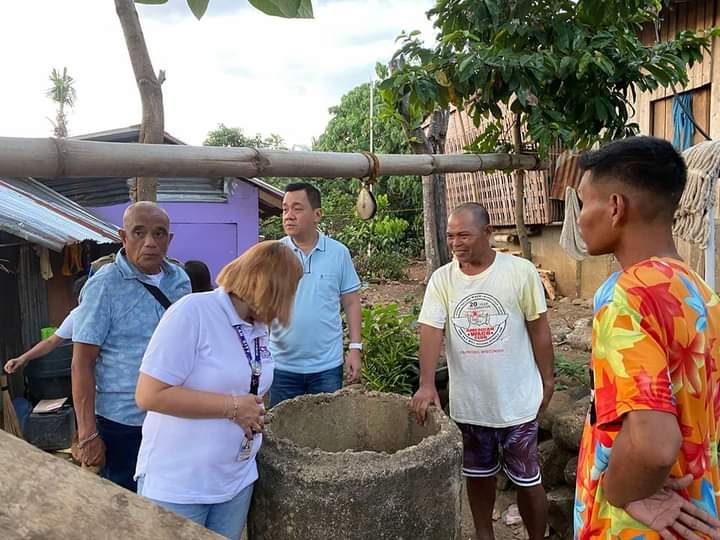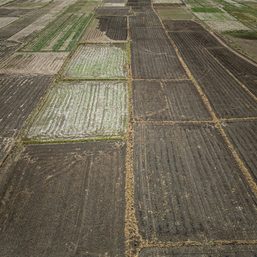SUMMARY
This is AI generated summarization, which may have errors. For context, always refer to the full article.

BACOLOD, Philippines – Rising temperatures and lack of rain have devastated vast tracts of sugarcane fields in the Negros provinces, the United Sugar Producers Federations of the Philippines (UNIFED) said.
Manuel Lamata, president of the United Sugar Producers Federations of the Philippines (UNIFED), stated that around 100,000 hectares of sugarcane fields have dried up in Negros alone due to the dry weather conditions caused by the El Niño phenomenon.
Edna Sobrecaray, Southern Negros coordinator of Task Force Mapalad (TFM), called on the government on Tuesday, March 12, to act swiftly because sugarcane fields in Negros have started to dry up.
TFM is one of the largest groups of agrarian reform beneficiaries (ARB) in the country, claiming to have more than 4,000 ARB-member beneficiaries in Southern Negros alone.
The group’s national coordinator, lawyer Armando Jarilla, highlighted that farmers were rapidly losing money and barely had enough to pay for their loans due to the El Niño weather conditions.
“I hope that the government will hear our collective plea amid the dry spell,” said Sobrecaray.
Sugar Regulatory Administration (SRA) chief Pablo Azcona, in a news conference on Tuesday, announced that the agency had already allocated P66 million for mitigating measures for the sugar industry of Negros.
Maria Lourdes Almodiente, chief agriculturist for the Sugar Regulatory Administration (SRA), declined to comment on Lamata’s claim regarding the damage caused by the El Niño to Negros’ sugar industry.
“We are still in the process of assessing the damage, and hopefully, we can release our consolidated report soon,” Almodiente said.
Negros Occidental Governor Eugenio Jose Lacson reiterated his call for the Department of Agriculture (DA) in Region VI to commence cloud-seeding operations to mitigate the adverse impact of the dry spell, especially in southern Negros.
Lacson said the prolonged dry spell in Region VI had continued to wreak havoc, damaging 1,646 hectares of rice and corn plantations in 11 towns and cities in the southern part of the province.
As of the latest count, he said, at least 1,963 farmers were adversely affected, with their collective crop losses estimated at P77.7 million.
The worst-hit areas are the cities of Kabankalan, Himamaylan, and Sipalay, and the towns of Cauayan, Ilog, Hinoba-an, Valladolid, Hinigaran, Binalbagan, Moises Padilla, and Isabela.
Topping the list is Kabankalan with an estimated P41.7 million in crop damage across 13 barangays covering 978.98 hectares and affecting 1,214 farmers.
Following Kabankalan are the two nearby localities of Cauayan and Ilog with P14 million and P7.4 million in crop damage, respectively.
Water scarcity
In Himamaylan, six villages are now experiencing water scarcity, according to the Himamaylan City Disaster Risk Reduction and Management Office (HCDRRMO). These barangays include Cabadiangan, Nabali-an, Carabalan, Su-ay, To-oy, and Buenavista.
Himamaylan Mayor Raymund Tongson stated on Thursday, March 7, that they recorded 18,507 families, comprising 30,825 individuals, suffering from severe water scarcity.
In Bacolod City, water rationing, which started in February, continued in urban barangays.
Two zones in Ellorico, Barangay Mandalagan, are among the listed worst-affected areas of water scarcity in Bacolod.
Meanwhile, Bago, the top rice-producing city in Negros Occidental, remained unfazed by the dry weather conditions.
Engineer Isaias Melendez, division manager of the Negros Occidental Irrigation Management Office (NOIMO), said the Bago River Irrigation System (BRIS) still has enough water supply to irrigate rice fields in Bago and the rice-producing towns of Valladolid, Pulupandan, Murcia, and San Enrique, and La Carlota City.
Bago Mayor Nicholas Yulo said the city government was ahead of the curve because they had implemented viable and sustainable rice farming measures as early as 2023.
In Moises Padilla town, Mayor Ella Celestina Garcia-Yulo said they had made an emergency purchase of equipment needed to immediately irrigate rice farms in their area.
Lacson said the provincial government would provide financial assistance to the affected rice and corn farmers in Negros Occidental. – Rappler.com
Add a comment
How does this make you feel?





















There are no comments yet. Add your comment to start the conversation.